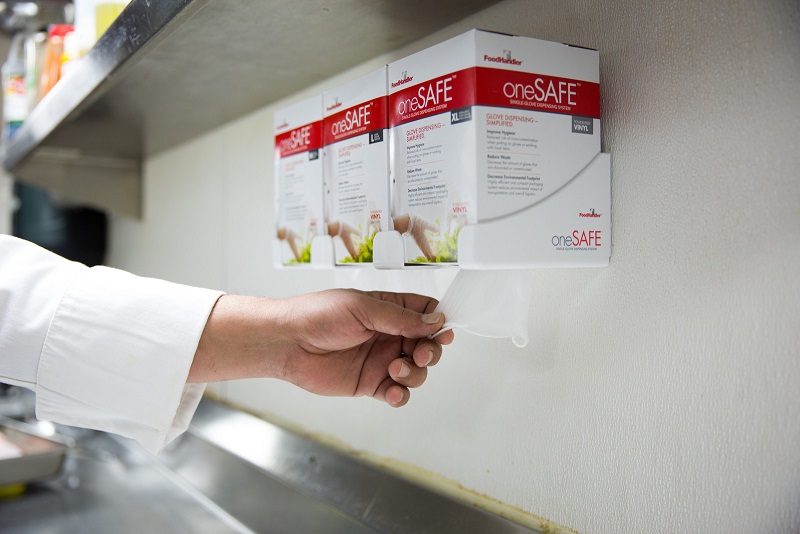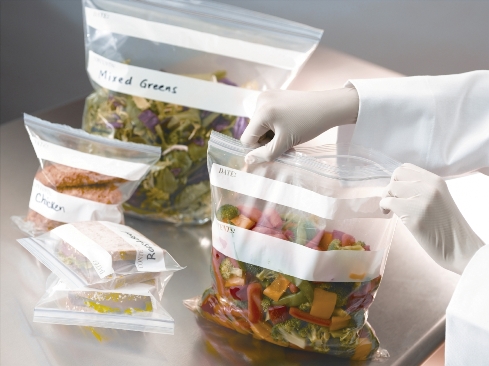Hand sinks: Often Taken for Granted, but an Essential Part to Effective Hand Hygiene
Late in January, I received a question about hand sinks in a foodservice operation. The question pertained to school staff (teachers and aides) who were using a hand washing sink in the school kitchen. The question came as a matter of who was allowed access to the kitchen to use the sink, but the question itself caused me to go down a rabbit hole of requirements for hand washing sinks in foodservice operations.
Hand sinks are, perhaps, taken for granted by many managers, supervisors, and employees in foodservice operations when it comes to reviewing hand washing effectiveness. They are easy to take for granted, until they are not working. Even in these blogs, we’ve focused on the correct procedure for washing your hands, when to wash hands, and hand washing supplies, but we don’t often focus on the hand sink.
The FDA Model Food Code states at least one hand sink should be available to employees. Further recommendations are that the sink should be convenient for employees who participate in food preparation, dispensing, and ware washing and there should be a hand sink immediately adjacent to restrooms.
…employees are more likely to wash their hands if the operation has more than one handwashing sink and/or a sink is located within the sight of the employee.
Our previous research has found that one big barrier to employees washing their hands is how convenient the sink is to their work area. Remember that your definition of convenient and your employees may very well differ. I once had one of my employees tell me that he can’t wash his hands as many times as he would need to by “the code”, simply because it takes too much time, and we expected him to get food out to our guests in a timely manner. Even though our management team thought that both hand washing sinks in the kitchen were convenient for all of our employees, employee perception didn’t agree – and it was the employees’ perception that really mattered as they were the ones working in that area 40 hours a week.
Other research in the field has also found employees are more likely to wash their hands if the operation has more than one hand washing sink and/or a sink is located within the sight of the employee. So how many is enough in your operation? The food code doesn’t give a straight answer to that question because it really does depend on your business. For a small-scale, limited production kitchen, one sink may very well be enough. However, for larger operations with complex food production, many sinks would be desired and recommended.
Solid recommendations on the number of sinks required are difficult to come by. Foodservice Equipment and Supplies Magazine noted that you should allow one hand sink for every five employees working in your kitchen at a time. Further, they noted that one hand sink should be planned for every 300 square feet of kitchen space, and one hand sink for each foodservice preparation and/or cooking area. These recommendations align with research in the area and would certainly mean that the hand washing sink is convenient and in view of each employee in the production area.
While this is great information to have, many who are reading this are likely dealing with kitchens that are already built and unable to easily renovate spaces to accommodate more hand washing sinks. In this case, it is imperative that we try to reinforce the importance of hand washing with our employees and remove any barriers they may have to washing their hands. Only then will employees start to change their behaviors and improve hand washing compliance.
Later this month, be on the lookout for the SafeBites Webinar Series announcements for 2023. We have an exciting set of webinars that we are planning this year. In the meantime, if you have any food safety questions, we are a quick email away and would be happy to assist. Risk Nothing.
READ MORE POSTS
The Worst Customer Complaint: Foodborne Illness
Food service managers and crew try to follow the rules of food protection. Yet, occasionally a complaint may arise and these calls take priority over all other daily crises. If you have been in the food service industry long enough, you may have gotten one of these. A customer may claim, "I think your food made me ill." These words inflict instant anxiety. If it happens, here are some next steps to think about in advance of such a claim:
How Effective is Your Food Safety Training?
Basic food safety in a restaurant kitchen is not rocket science, but critically important for the crew to take the time to learn about it and for managers to set the example each day. Customers never expect or want to see a manager, chef, or a crew member make a very visible food safety mistake, like not washing hands before food prep and gloving, or touching their face or hair while prepping or handling food. Have we all seen it happen in our restaurant or as a customer elsewhere? Certainly. Are you using some creativity in your current training methods to help your staff “get it” so to speak, and reflect positive behaviors regarding food safety?
Why Does Food Spoil?
Food gradually deteriorates because of a natural process of aging, just like humans. However with all foods, there are a few things we can do that have a positive effect on the shelf life and safety of our foods at the restaurant. Some preservation is done at the food manufacturing plant, some naturally, but a better understanding of the processes may help you extend that shelf life. Preservation methods and storage conditions must be designed to reduce the rate of decomposition and protect the safety, appearance and taste of our food.










